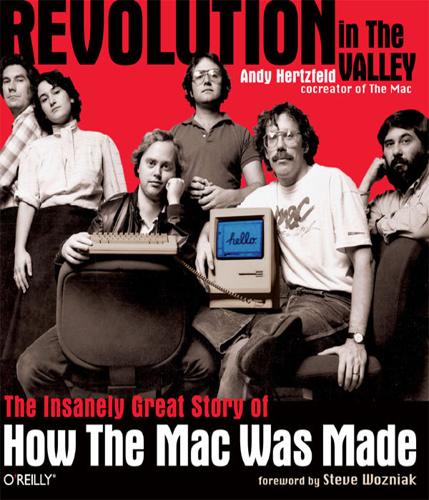
Revolution in the Valley: The Insanely Great Story of How the Mac Was Made
by
Andy Hertzfeld
Published 19 Nov 2011
Mellor 83: Crowd at US Festival. © Bettmann/CORBIS 85: Steve Wozniak playing air computer. © Roger Ressmeyer/CORBIS 99: Steve Jobs and Bill Atkinson. © Norman Seeff 104, 107: Alice packaging. Photos courtesy of Apple Computer, Inc. 128: Mike Moritz. © Matthew Naythons 150: Steve Jobs, John Sculley, and Steve Wozniak. © Bettmann/CORBIS 169: Defender® screenshot. Used with permission of Midway Games, Inc. 175: Bill Atkinson in 1987. Photo courtesy of Bill Atkinson 178: The Mac design team. © Norman Seef. Photo courtesy of Apple Computer, Inc. 180, 182, 183: 1984 commercial stills. © Apple Computer, Inc.
…
Jef hired Marc Lebrun to write software in early 1980, but Marc was more interested in Lisp machines than in a limited memory microcomputer like the Mac, so nothing much happened until Bud Tribble replaced him in September of 1980. Bud knew Jef from UCSD, and was also good friends with Bill Atkinson. They had a part-time, two-person consulting company in Seattle called Synaptic Systems while they were both graduate students. Bill and Jef convinced Bud to take a one-year leave of absence from the M.D./Ph.D. program he was pursuing at University of Washington at Seattle. Bud was in the fifth year of a seven-year program. Instead of returning to med school, Bud moved into a spare room at Bill Atkinson’s house and started work on the Mac project at Apple. He quickly began to breathe life into Burrell’s languishing prototype by writing some graphics routines for the 6809.
…
busy being born A visual history of the development of the Lisa/Macintosh user interface The Macintosh User Interface wasn’t designed all at once; it was actually the result of almost five years of experimentation and development at Apple, starting with graphics routines Bill Atkinson began writing for Lisa in late 1978. Like any evolutionary process, there were many false starts and blind alleys along the way. It’s a shame these tend to be lost to history, since there is a lot we can learn from them. Fortunately, the main developer of the user interface, Bill Atkinson, was an avid, lifelong photographer, and he had the foresight to document the incremental development of the Lisa User Interface (which more or less became the Mac UI after a few tweaks) with a series of photographs.
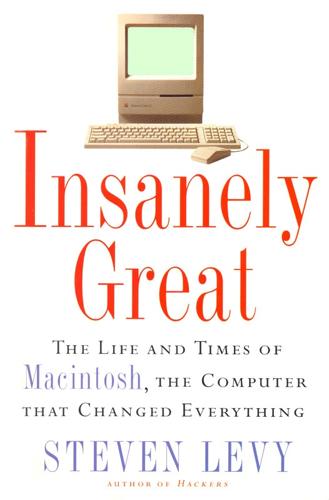
Insanely Great: The Life and Times of Macintosh, the Computer That Changed Everything
by
Steven Levy
Published 2 Feb 1994
Tesler was so impressed, in fact, that a few months later, despairing of Xerox ever getting its act together, he left PARC to seek employment in the personal computer world. At Apple, of course. Tesler recalled Bill Atkinson sitting with his face almost pressed against the screen. Meanwhile, Steve Jobs could hardly contain himself with excitement. After he watched Tesler manipulate the screen display, open windows, click on icons (the Apple people were not permitted to handle the goods), he nearly exploded. "Why aren't you doing anything with this?" he bellowed. "This is the greatest thing! This is revolutionary!" Steve Jobs, Bill Atkinson, and the others walked out that day with something much more valuable than diamonds, treasury bills, or even gold bullion.
…
They dubbed it the "clandestine mouse." Bill Atkinson quickly hacked a driver program that allowed the mouse to move a cursor on the computer screen. Jobs and Hawkins proceeded to dazzle skeptics with the power of the pointing device. The mouse triumphed. A torch had been passed. The nexus of twenty years and millions of dollars of government and top-level corporate research was now in the hands of a company that only a few years before had operated out of a garage. Apple's task was to take this technology out of the lab and into general circulation. Bill Atkinson quickly learned how difficult this would be.
…
After the adults took charge, there would be plenty of time for creativity, for innovation, for vision. And Sculley was determined to be known as the architect of that vision. So, in late 1985, when Bill Atkinson went to John Sculley with an idea that dramatically enhanced the Macintosh's ability to handle information, the chairman and chief executive officer was a willing audience. The past few months had been dreary for Bill Atkinson. At first, the inventor of QuickDraw and hero of MacPaint thought he had avoided the post-Macintosh depression paralyzing many of his peers. Capitalizing on the freedom according him as an Apple Fellow, he embarked on a project as potentially transforming as those previous achievements.
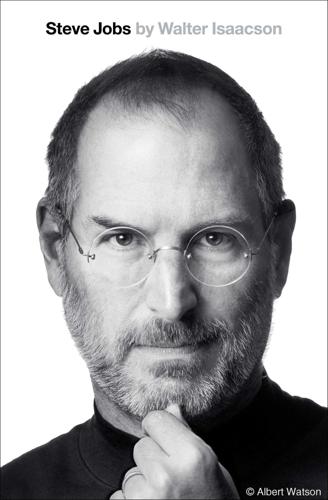
Steve Jobs
by
Walter Isaacson
Published 23 Oct 2011
CHAPTER 8: XEROX AND LISA A New Baby: Interviews with Andrea Cunningham, Andy Hertzfeld, Steve Jobs, Bill Atkinson. Wozniak, 226; Levy, Insanely Great, 124; Young, 168–170; Bill Atkinson, oral history, Computer History Museum, Mountain View, CA; Jef Raskin, “Holes in the Histories,” Interactions, July 1994; Jef Raskin, “Hubris of a Heavyweight,” IEEE Spectrum, July 1994; Jef Raskin, oral history, April 13, 2000, Stanford Library Department of Special Collections; Linzmayer, 74, 85–89. Xerox PARC: Interviews with Steve Jobs, John Seeley Brown, Adele Goldberg, Larry Tesler, Bill Atkinson. Freiberger and Swaine, 239; Levy, Insanely Great, 66–80; Hiltzik, 330–341; Linzmayer, 74–75; Young, 170–172; Rose, 45–47; Triumph of the Nerds, PBS, part 3.
…
CHAPTER 11: THE REALITY DISTORTION FIELD Interviews with Bill Atkinson, Steve Wozniak, Debi Coleman, Andy Hertzfeld, Bruce Horn, Joanna Hoffman, Al Eisenstat, Ann Bowers, Steve Jobs. Some of these tales have variations. See Hertzfeld, 24, 68, 161. CHAPTER 12: THE DESIGN A Bauhaus Aesthetic: Interviews with Dan’l Lewin, Steve Jobs, Maya Lin, Debi Coleman. Steve Jobs in conversation with Charles Hampden-Turner, International Design Conference in Aspen, June 15, 1983. (The design conference audiotapes are stored at the Aspen Institute. I want to thank Deborah Murphy for finding them.) Like a Porsche: Interviews with Bill Atkinson, Alain Rossmann, Mike Markkula, Steve Jobs.
…
CHAPTER TWENTY-FOUR The Restoration: The Loser Now Will Be Later to Win CHAPTER TWENTY-FIVE Think Different: Jobs as iCEO CHAPTER TWENTY-SIX Design Principles: The Studio of Jobs and Ive CHAPTER TWENTY-SEVEN The iMac: Hello (Again) CHAPTER TWENTY-EIGHT CEO: Still Crazy after All These Years CHAPTER TWENTY-NINE Apple Stores: Genius Bars and Siena Sandstone CHAPTER THIRTY The Digital Hub: From iTunes to the iPod CHAPTER THIRTY-ONE The iTunes Store: I’m the Pied Piper CHAPTER THIRTY-TWO Music Man: The Sound Track of His Life CHAPTER THIRTY-THREE Pixar’s Friends: . . . and Foes CHAPTER THIRTY-FOUR Twenty-first-century Macs: Setting Apple Apart CHAPTER THIRTY-FIVE Round One: Memento Mori CHAPTER THIRTY-SIX The iPhone: Three Revolutionary Products in One CHAPTER THIRTY-SEVEN Round Two: The Cancer Recurs CHAPTER THIRTY-EIGHT The iPad: Into the Post-PC Era CHAPTER THIRTY-NINE New Battles: And Echoes of Old Ones CHAPTER FORTY To Infinity: The Cloud, the Spaceship, and Beyond CHAPTER FORTY-ONE Round Three: The Twilight Struggle CHAPTER FORTY-TWO Legacy: The Brightest Heaven of Invention Acknowledgments Sources Notes Index Illustration Credits Photos CHARACTERS AL ALCORN. Chief engineer at Atari, who designed Pong and hired Jobs. GIL AMELIO. Became CEO of Apple in 1996, bought NeXT, bringing Jobs back. BILL ATKINSON. Early Apple employee, developed graphics for the Macintosh. CHRISANN BRENNAN. Jobs’s girlfriend at Homestead High, mother of his daughter Lisa. LISA BRENNAN-JOBS. Daughter of Jobs and Chrisann Brennan, born in 1978; became a writer in New York City. NOLAN BUSHNELL. Founder of Atari and entrepreneurial role model for Jobs.

Valley of Genius: The Uncensored History of Silicon Valley (As Told by the Hackers, Founders, and Freaks Who Made It Boom)
by
Adam Fisher
Published 9 Jul 2018
The first three Apple Fellows were Steve Wozniak, Bill Atkinson, and Rich Page. The initial definition of a fellow was someone who had made a big impact on the industry. Al Alcorn was recruited—he had done Pong. And they also wanted to recruit Alan Kay. So we brought them both in. Alan Kay: Steve never forgot where his ideas came from. Andy Hertzfeld: Alan Kay was my hero. I was like Damn! But it was still time for me to quit. Larry Tesler: And then as the program expanded and it even included a person who was not an engineer—Kristina Hooper Woolsey. Kristina Woolsey: I came in ’85 when the HyperCard stuff started. Bill Atkinson spontaneously decided to do the product.
…
Michael Stern: Devices in your pocket, social networking, social media, a notion of an electronic community, anytime-anywhere communication, handheld devices that could enable you to do just about anything from shopping to research to talking to your mother. It’s all there, in that book he wrote. He was at Apple to help springboard the project and get it funded. Al Alcorn: So Marc was pushing this thing, and he infected Bill Atkinson and some of the other guys with this idea. Andy Hertzfeld: Marc met with Bill Atkinson, who had just finished HyperCard and was kind of looking around for what to do next. And he got Bill really excited about it. So one day right after my friend Burrell Smith went insane and I was dealing with that emotionally shattering experience and all of the fallout there, I get a phone call from Bill, incredibly excited, “You’ve got to see this new thing at Apple!
…
Larry Tesler: We wanted to show them enough that they would build bitmap displays and mice and laser printers and other things that we could get at a consumer-ish kind of price, because they were buying it for a bigger market than we were. And that required showing them a little bit more. So we did. Bruce Horn: Atkinson was just looking at it so closely—trying to figure it out. Andy Hertzfeld: Bill Atkinson was the main graphics engineer at Apple, and he was doing the graphics on the Lisa. Bruce Horn: He was nose to the screen, just trying to figure it out. Trip Hawkins: We were not complete strangers to bitmapped graphics, because Apple II had them. It’s just what you could do with them on an Apple II was kind of limited.

User Friendly: How the Hidden Rules of Design Are Changing the Way We Live, Work & Play
by
Cliff Kuang
and
Robert Fabricant
Published 7 Nov 2019
It’s what made computing the glue of the modern knowledge economy. The story goes that Steve Jobs went for a demo at Xerox PARC, saw the future there, and more or less stole it. But it’s a story riddled with holes, starting with the obvious: How would Steve Jobs have even thought there was anything to steal in the first place? Bill Atkinson came to Apple in 1978, after Jobs had convinced him to quit his Ph.D. program in neuroscience at UC San Diego. He had become known for designing computer programs that made 3-D maps of mouse brains. It was cutting-edge work, but Jobs pooh-poohed it: “What you’re doing is always going to be two years behind.
…
The computer would become a “safe and covert environment, where the child can assume almost any role without social or physical hurt”—a kind of digital sandbox that could touch any piece of information that the world had to offer, one that would let children build computer programs as easily as they might build sandcastles.20 The Smalltalk demo was just an hour long, and for Bill Atkinson it was a blur. In fact, the most eventful thing Atkinson saw that day wasn’t the desktop metaphor—the early papers from Xerox PARC had already introduced that idea. Rather, it was what Atkinson thought he saw. As the Smalltalk engineers were showing off how you could click around on the windows they’d designed, Atkinson assumed they had figured out a way for the machine to simulate those windows being layered on top of one another, like real sheets of paper on a desk.
…
(In April 2019, Microsoft became the third company in the world to reach a $1 trillion valuation, right behind Amazon.) Apple, of course, nearly died in the late 1990s; a major part of what saved the company in the years after Steve Jobs returned was the iPod’s click wheel, which cracked the problem of making it fun to browse incredibly long lists (which themselves were formatted in the drop-down menus that Bill Atkinson invented for the Lisa). Blackberry, with its telephone lashed to a keyboard, was another empire until the iPhone. Even Amazon grew from an interface idea: 1-Click shopping. The value of the patent alone is staggering: Amazon made billions licensing it to Apple for the launch of the iTunes store.
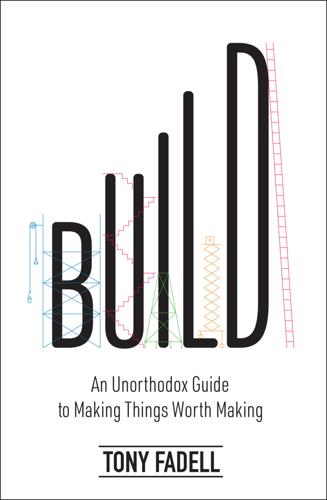
Build: An Unorthodox Guide to Making Things Worth Making
by
Tony Fadell
Published 2 May 2022
The Web didn’t exist, mobile gaming meant carrying a Nintendo console to your friend’s house, and almost nobody owned—or even really understood the need for—a cell phone. There were pay phones everywhere, everyone’s got a pager—why lug around a giant plastic brick with you? But Marc and two other geniuses and ex-Apple wizards, Bill Atkinson and Andy Hertzfeld, started a company to build the future. They called it General Magic.* I read about it in the “Mac The Knife” rumors section of (the now long-dead) MacWeek Magazine right around the time I realized that I had no real idea how to run my startup. I’d started a few computer-related companies in high school and college, but I’d been focused on Constructive Instruments since my junior year at the University of Michigan.
…
However, the only thing that can make a job truly amazing or a complete waste of time is the people. Focus on understanding your field and use that knowledge to create connections with the best of the best, people you truly respect. Your heroes. Those (typically humble) rock stars will lead you to the career you want. * * * If there are gods of software design and coding, they are Bill Atkinson and Andy Hertzfeld. Their faces were in the magazines I’d read religiously cover to cover since grade school. I’d used everything they’d ever built—the revolutionary Mac, MacPaint, Hypercard, the Lisa. They were my heroes. When I met them, I felt like I was meeting the president. The Beatles.
…
We would create a slew of products, reinventing unloved but important objects everyone needed at home. And, most importantly, we were going to create a platform. We were going to build the connected home. The concept wasn’t new. Connected home systems had been around for a couple of decades by then. I remember Bill Atkinson from General Magic trying to build a connected home in the nineties. He tried to rig it himself, battling to make something useful. But over the years a lot of wealthy tech people just dropped a quarter million dollars to have an elaborate system built into their walls. There’d be sensors and screens and switches and controllers for thermostats, alarm systems, lights, music.
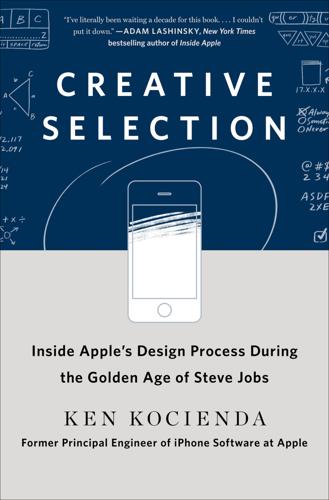
Creative Selection: Inside Apple's Design Process During the Golden Age of Steve Jobs
by
Ken Kocienda
Published 3 Sep 2018
He did his best to use this time gap to the company’s advantage, to make it seem like Apple was playing hard to get with its new smartphone, and at least among geeks and gizmo lovers, it succeeded. When the iPhone arrived in stores, many people couldn’t wait to get one. One of those people was Bill Atkinson. As I walked past the front of the Apple Store and turned left down Kipling Street in Palo Alto, and peered ahead to see the end of the line in the distance, I saw him. Bill Atkinson, the software virtuoso, graphics whiz, one of the visionary contributors to the original Macintosh, developer of revolutionary apps like MacPaint and HyperCard. Since Bill had left Apple long ago, he had to wait in line just like everyone else.
…
I thought this was marvelous. Bill and I had never met, but we knew many of the same people. I introduced myself after asking him about his wooden iPhone, and I told him that I had worked on the actual iPhone, though I’m not sure it registered. In any event, it was a thrill for me to see Bill Atkinson, one of the makers of the Mac, one of my heroes, waiting in line to buy his first iPhone. Somehow, that felt like a mission accomplished, so I returned to my car and drove back to the Apple campus in Cupertino. When I badged into the Purple hallway, Scott Forstall was standing among a small group of programmers out in front of his office.

Fire in the Valley: The Birth and Death of the Personal Computer
by
Michael Swaine
and
Paul Freiberger
Published 19 Oct 2014
Lisa The Mac’s big sister was not a commercial success. (Courtesy of Apple Computer Inc.) The Lisa was originally conceived as a multi-CPU computer, and Woz was going to design it. That plan had changed over time, and now the Lisa was going to use a single very powerful CPU, the Motorola 68000. And programming whiz Bill Atkinson, instrumental in getting the Pascal language on the Apple II, was spearheading the software-development team. Lisa was to be a potent machine with novel features. Atkinson envisioned a “paper” paradigm—the screen background would be white, and text and graphics would mix freely, as on a printed page.
…
Jobs was quick to judge people, and was binary about it. Individuals were either ones or zeros—on his good list or his bad list. Raskin didn’t believe he was on Jobs’s list of ones, although he didn’t particularly care. Still, Raskin knew he was not the man to convince Jobs to look at the wonderland at PARC. Bill Atkinson, whom Raskin had hired, had Jobs’s respect, so Raskin encouraged Atkinson to get Jobs to take a tour of PARC. It was Atkinson, then, who brought PARC to Jobs’s attention and piqued his interest. The ploy worked. According to Jobs, he also negotiated a better-than-average demo with Xerox. “I went down to Xerox Development Corporation,” Jobs said, “which made all of Xerox’s venture investments, and I said, ‘Look.
…
Others had gotten tours of PARC and seen demonstrations of the technology, but now for the first time Xerox was opening its doors to a computer-company executive in a position to bring the technology to market. But Xerox Development Corporation overruled her. Jobs made trips to PARC in November and December of 1979, with Bill Atkinson, Mike Scott, and others. There, Larry Tesler showed them around and gave them “look-but-don’t-touch” demos of the innovations. For the first time they saw a graphical user interface: documents appeared in overlapping frames on a white screen, and software programs were made tangible through icons and direct manipulation of onscreen elements.
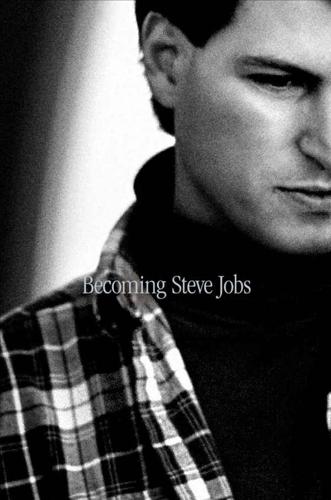
Becoming Steve Jobs: The Evolution of a Reckless Upstart Into a Visionary Leader
by
Brent Schlender
and
Rick Tetzeli
Published 24 Mar 2015
He had the ability to see around corners, to envision how the seeds of existing ideas could be combined to create something unimaginable to others. The challenge he faced was to become an effective visionary—that’s what turns a dreamer into someone who changes the world. A few weeks before he made that drive up to the Garden of Allah in late 1979, Steve had decided, at the urging of Bill Atkinson, Jef Raskin, and several other Apple technical employees, to check out some work being done by a well-known computer scientist named Alan Kay and some other engineers at Xerox Corporation’s Palo Alto Research Center, just a ten-minute drive up the peninsula from Cupertino. PARC, as it was known, would become famous for developing the concepts behind any number of important technologies, including Ethernet local area networking, high-resolution video monitors, laser printing, and object-oriented programming.
…
So when Steve assumed full control of the project in early 1980, the team felt a brief spurt of optimism. Steve told them that he fully intended to have the Lisa be the first computer to feature a graphical user interface and a mouse. They had, he told them, a chance to make history. He asked Bill Atkinson, the project’s lead software architect, how long it would take to translate what they’d seen at PARC into software that could be run on the Lisa. Atkinson predicted that he could do it in a mere half a year—missing the mark by some two and a half years. Clearly, Steve wasn’t the only person at Apple who could confuse a clear vision for a short path.
…
In January 2001, Ruby asked some former Newton engineers to begin work in earnest on some sort of portable audio device around the Toshiba micro-drive. In March he put an engineer he’d hired from Philips NV, Tony Fadell, in charge of the group. Fadell, an energetic entrepreneur with the build of a college wrestler and the intensity of a high school football coach, had worked at General Magic back in the early 1990s, with Bill Atkinson, Andy Hertzfeld, and Susan Kare, veterans of the original Macintosh team, who had told him horror stories about Steve in his early days. “I expected an overbearing tyrant,” he says, “but he wasn’t like that at all. He didn’t resemble the guy from their stories at all. On the things he cared about he could be very intense, but in general, he was much softer, much more considerate.

Dreaming in Code: Two Dozen Programmers, Three Years, 4,732 Bugs, and One Quest for Transcendent Software
by
Scott Rosenberg
Published 2 Jan 2006
Just as Noble and Biddle had found with their study of reusable software objects, there is nothing uniform about a line of code. There is no reliable relationship between the volume of code produced and the state of completion of a program, its quality, or its ultimate value to a user. Andy Hertzfeld tells a relevant tale from the early days at Apple about his mentor Bill Atkinson, a legendary software innovator who created Quickdraw and Hypercard. Atkinson was responsible for the graphic interface of Apple’s Lisa computer (a predecessor of the Macintosh). When the Lisa team’s managers instituted a system under which engineers were expected to fill out a form at the end of each week reporting how many lines of code they had written, Atkinson bridled.
…
Then they look at each other. “I’ll be excited when we’re moving forward on implementing,” Hertzfeld says. “My own style is, I implement too soon. But maybe that will cause the group average here to come out right.” “I try to play all the chess moves in my head before I start,” Anderson answers. Hertzfeld laughs. “Bill Atkinson used to say about me, everything was ‘Ready, fire, aim!’” “I’ve typically done most of a project by myself,” Anderson says. “I haven’t been as good at splitting it up so that lots of people could work on it together.” Even, Hertzfeld asks, at Next? “When I was a manager there, I wasn’t writing code.
…
“Michael is the last person”: This is at http://www.undignified.org/people.htm. “the ground on which we are”: Michael Toy blog posting, June 26, 2003, at http://blogs.osafoundation.org/blogotomy/000248.htm. “Management is about human beings”: Peter Drucker, “Management as Social Function and Liberal Art,” in The Essential Drucker (Harper Business, 2001), p. 10. Bill Atkinson’s “-2000” lines of code: From Andy Hertzfeld, Revolution in the Valley: The Insanely Great Story of How the Mac Was Made (O’Reilly, 2005),p. 65. Also at http://www.folklore.org/StoryView.py?project=Macintosh&story=Negative_2000_Lines_ Of_Code.txt. “management by wandering around”: Tom Peters in a blog posting from September 6, 2005, at http://www.tompeters.com/entries.php?

The Wikipedia Revolution: How a Bunch of Nobodies Created the World's Greatest Encyclopedia
by
Andrew Lih
Published 5 Jul 2010
HyperCard used the idea of a “stack” of virtual index cards, in which the user could easily create new cards, create links between them, and place content on them. Putting a picture, sound, or video onto a card was as easy as inserting it and dragging it around on the screen. You could also put virtual buttons on cards that could respond to clicks and other commands. The brainchild of Apple programmer Bill Atkinson, HyperCard was originally given away for free in 1987 and became incredibly popular with seasoned computer programmers, novice users, and educational institutions. It was easy to understand, easy to program, and incredibly powerful for creating content. No programming experience was necessary, and even kids were getting into the action, creating their own “stacks” of fun content.
…
HyperCard was designed around the original Macintosh black-and-white nine-inch screen, and was stuck with that small size for many years despite computer displays getting bigger and bigger. HyperCard was also an odd product for Apple to manage. Because it was given away, something Apple’s esteemed creator Bill Atkinson demanded, the company made no direct revenue from it. So while it became quite popular, it was hard for Apple, primarily a computer hardware company, to justify serious resources to develop it further. The irony is that HyperCard was revolutionary and popular, with entire businesses based on its powerful capabilities, but Apple let it wither on the vine.

Dogfight: How Apple and Google Went to War and Started a Revolution
by
Fred Vogelstein
Published 12 Nov 2013
He was young, brash, and smart, having been part of cutting-edge portable-hardware engineering in the Valley for fifteen years. He once told a reporter that he would have ended up in jail had he not discovered computers. He occasionally showed up for work with bleached hair. He was not good at holding his tongue when faced with substandard work or ideas. His first job out of college was at General Magic, a company Bill Atkinson and Andy Hertzfeld spun out of Apple in the early 1990s in the hope of developing some of the first software ever written exclusively for mobile devices. The project failed and Fadell found himself at Philips, the giant Dutch conglomerate, where he quickly became the company’s youngest executive.
…
Steve Jobs’s store was, naturally, the one in downtown Palo Alto at the corner of University Avenue and Kipling Street. It was a mile and a half from his house and he often showed up there unannounced when he was in town. The appropriate high-tech luminaries had already gathered when he arrived. Apple cofounder Steve Wozniak and early Apple employees Bill Atkinson and Andy Hertzfeld were already standing on line. But it also seemed as if Jobs had some internal flames to fan of his own, said one of the engineers who was there along with Grignon and many others who had worked on the project, including Fadell and Forstall. “So there’s this reunion of the original Mac guys, and it’s really cool.
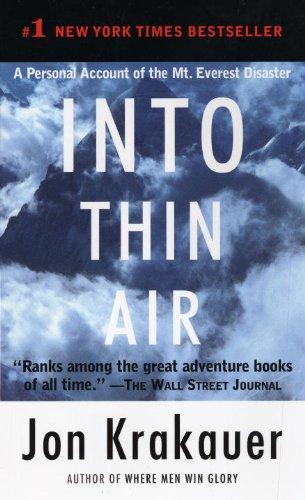
Into Thin Air: A Personal Account of the Mt. Everest Disaster
by
Jon Krakauer
Published 25 Aug 2009
Although he had a quick, scientific mind, at the age of fifteen he dropped out of school after butting heads with an especially autocratic teacher, and in 1976 he went to work for Alp Sports, a local manufacturer of climbing equipment. “He started out doing odd jobs, working a sewing machine, things like that,” remembers Bill Atkinson, now an accomplished climber and guide, who also worked at Alp Sports at the time. “But because of Rob’s impressive organizational skills, which were apparent even when he was sixteen and seventeen, he was soon running the entire production side of the company.” Hall had for some years been an avid hill walker; about the same time he went to work for Alp Sports, he took up rock and ice climbing as well.
…
Thanks, also, to David Schensted and Peter Bodde of the American Embassy in Kathmandu, Lisa Choegyal of Tiger Mountain, and Deepak Lama of Wilderness Experience Trekking for their assistance in the wake of the tragedy. For providing inspiration, hospitality, friendship, information, and sage advice, I’m grateful to Tom Hornbein, Bill Atkinson, Madeleine David, Steve Gipe, Don Peterson, Martha Kongsgaard, Peter Goldman, Rebecca Roe, Keith Mark Johnson, Jim Clash, Muneo Nukita, Helen Trueman, Steve Swenson, Conrad Anker, Alex Lowe, Colin Grissom, Kitty Calhoun, Peter Hackett, David Shlim, Brownie Schoene, Michael Chessler, Marion Boyd, Graem Nelson, Stephen P.
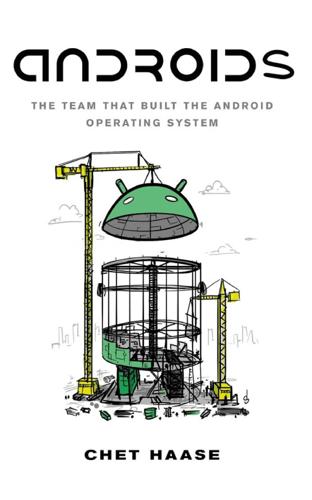
Androids: The Team That Built the Android Operating System
by
Chet Haase
Published 12 Aug 2021
A really crowded town with millions of inhabitants all over the world, but a small town nevertheless, where you keep bumping into people you’ve met elsewhere. 253 Cary agreed that he implemented Picture for Skia, but not that he invented the concept. He gave that credit to Bill Atkinson, one of the engineers on the original Macintosh team at Apple who helped create the original QuickDraw 2D graphics engine for the Mac. “Bill Atkinson invented Pictures, and he probably stole it from somebody else. I was just standing on the shoulders of giants.” Most software that is written is either re-implementing existing concepts or building upon and extending them in new ways. 254 The Picture object in Skia is essentially a pre-processed list of the low-level information that the system needs to draw a particular scene.
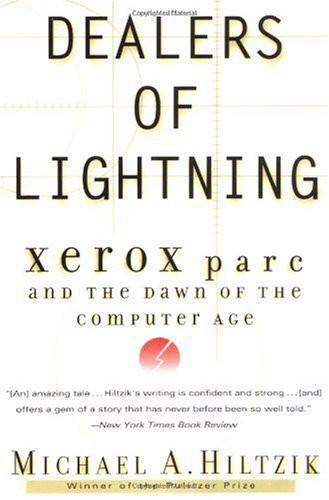
Dealers of Lightning
by
Michael A. Hiltzik
Published 27 Apr 2000
Almost every program had capabilities that had never been seen in a research prototype anywhere, much less in a commercial system. “There was lots to Smalltalk,” Tesler remembered. “You could see it thirty times and see something new every time.” What was interesting—or to Goldberg, ominous—was the intensity with which the Apple engineers paid attention. Bill Atkinson, a brilliant programmer who would later put his distinctive stamp on the Macintosh, kept his eyes on the screen as though they were fixed there by a magnetic field. He was standing so close that as Tesler conducted his assigned portion of the demo he could feel Atkinson’s breath on the back of his neck.
…
The main pointing device of the original Lisa interface was something called a “softkey,” which appeared on the screen as a sort of menu listing the command options for the user at any given moment: If the active application was a text editor, for example, it might offer the choices of insert and delete. The user selected a softkey by using keyboard keys to move an arrow on the screens, then executed the command by striking “enter.” The mouse was available, but it was scantily used and entirely optional. Bill Atkinson, whose intense concentration during the demo left such a strong impression on Tesler, had spent months trying to design a more dynamic interface. But he had been unable to solve several programming problems, including how to write text into an irregularly shaped region of the screen—for example, the corner of one window peeking out from beneath another.
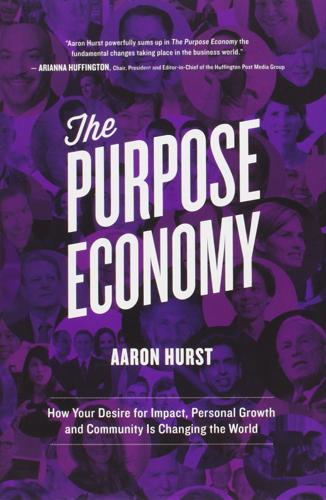
The Purpose Economy: How Your Desire for Impact, Personal Growth and Community Is Changing the World
by
Aaron Hurst
Published 31 Aug 2013
In 1990, then-Apple executive Marc Porat convinced John Scully that the next generation of computing would require a partnership of computers, communications, and consumer electronics. John gave it the green light, but it was under-resourced, and by May of that year, Marc had convinced him to let it be spun out and to allow him to take two of Apple’s stars (Bill Atkinson and Andy Hertzfeld) with him. They founded a new company and called it General Magic. Within a couple of years, they launched the first smartphone. You could make calls, manage your calendar, and even shop online. To put this in perspective, this was before the first web browser and required the phone to be connected to a phone line (i.e. not so mobile).

Troublemakers: Silicon Valley's Coming of Age
by
Leslie Berlin
Published 7 Nov 2017
We should celebrate!”I Markkula introduced board chair and Macintosh group leader Steve Jobs, who, dressed in a white linen shirt, quoted Robert Kennedy: “There are those that look at things the way they are, and ask why? I dream of things that never were, and ask why not?” Jobs then singled out two engineers, Bill Atkinson and Rich Page, for their contributions to the new Lisa computer. (The tent also contained an ice sculpture of that machine.) Jobs handed each inaugural “Apple Fellow” a Superman cape and a large medal. Later, they would receive bonus checks, as well. Markkula stepped back to the podium. Every Apple employee, he said, would receive a pair of crystal goblets like the one he held, to commemorate the company’s “billion-dollar achievement.”
…
Markkula, interview by author, May 3, 2016. 50. Markkula, CHM interview. 51. Larry Tesler and Chris Espinosa, “Origins of the Apple User Interface,” talk given Oct. 28, 1997, http://web.archive.org/web/20040511051426/http://computerhistory.org/events/lectures/appleint_10281997/appleint_xscript.shtml. Andy Hertzfeld recalls that Bill Atkinson, a member of the Lisa group, attended Mac group meetings. Hertzfeld, “Credit Where Due,” http://www.folklore.org/StoryView.py?project=Macintosh&story=Credit_Where_Due.txt. 52. Regis McKenna, interview by author, April 11, 2000. 53. Hawkins, interview by author, May 20, 2016. 54. The full interview appears in Computers and People, July–August 1981: 8.

The Innovators: How a Group of Inventors, Hackers, Geniuses and Geeks Created the Digital Revolution
by
Walter Isaacson
Published 6 Oct 2014
With his feel for design, familiarity with fonts, and love of calligraphy, Jobs was blown away by bitmapping. “It was like a veil being lifted from my eyes,” he recalled. “I could see what the future of computing was destined to be.” As Jobs drove back to Apple’s office in Cupertino, at a speed that would have awed even Gates, he told his colleague Bill Atkinson that they had to incorporate—and improve upon—Xerox’s graphical interface in future Apple computers, such as the forthcoming Lisa and Macintosh. “This is it!” he shouted. “We’ve got to do it!” It was a way to bring computers to the people.108 Later, when he was challenged about pilfering Xerox’s ideas, Jobs quoted Picasso: “Good artists copy, great artists steal.”
…
After graduating from Purdue, he got a job at an electronic equipment company, Tektronix, where he was assigned to keep track of projects, a task similar to what Berners-Lee faced when he went to CERN. To do this he modified a superb software product developed by one of Apple’s most enchanting innovators, Bill Atkinson. It was called HyperCard, and it allowed users to make their own hyperlinked cards and documents on their computers. Apple had little idea what to do with the software, so at Atkinson’s insistence Apple gave it away free with its computers. It was easy to use, and even kids—especially kids—found ways to make HyperCard stacks of linked pictures and games.
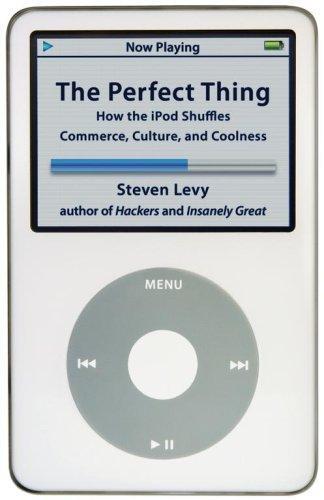
The Perfect Thing: How the iPod Shuffles Commerce, Culture, and Coolness
by
Steven Levy
Published 23 Oct 2006
He became an ace pro- The Perfect Thing 54 grammer and started three companies before he graduated from the University of Michigan. His first job out of college, in 1992, was at a start-up called General Magic, working beside two of the stars of the legendary team that had created the Macintosh, Andy Hertz-feld and Bill Atkinson. It was like joining a basketball team and finding yourself teammates with Larry Bird and Dr. J. Unfortunately, the General Magic handheld communicator was a flop. From there, Fadell had a weird few years at the Philips corporation. Concerned about its overly staid reputation, the Dutch conglomerate had offered Fadell, still in his twenties, the chance to head its new mobile computing group.
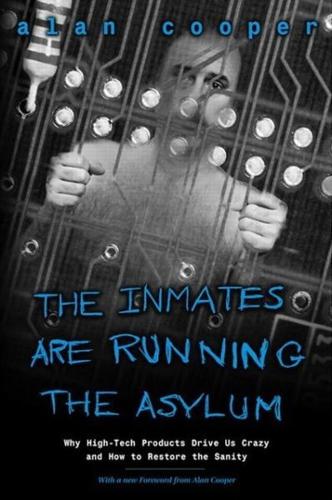
The Inmates Are Running the Asylum
by
Alan Cooper
Published 24 Feb 2004
I'm not saying that a programmer cannot become a designer; I'm just saying that it is nearly impossible to do either task well while attempting both simultaneously. Every software engineer thinks that he is different, that he is the one who can do both. This is simply not true, as the failure of General Magic showed. Bill Atkinson and Andy Hertzfeld headed General Magic's development effort. These two men were the lead software engineers on the Apple Macintosh and are arguably the two most talented, creative, and inventive programmers ever. Their simultaneous design and programming on the Macintosh was a success in 1984 (although Jef Raskin, who did no programming, contributed much of the design).

This Is for Everyone: The Captivating Memoir From the Inventor of the World Wide Web
by
Tim Berners-Lee
Published 8 Sep 2025
None of these technologies – not even the mouse – were familiar to anyone in the audience. In his presentation, Engelbart also debuted the ‘hyperlink’, which users clicked on with a mouse to move both within documents and between documents stored on a single computer. In fact, it was Engelbart who coined the term ‘mouse’. Hypertext gained widespread popularity in 1987, when Bill Atkinson, a programmer at Apple, released HyperCard, a ‘stack’ of virtual ‘cards’ that organized text, images and multimedia objects in a manner that resembles a modern web page. The cards weren’t organized in a hierarchical way, and you could jump from one card to any other. (This was the kind of ‘illogical’ conceptual leap that computer programmers sometimes struggled with; Atkinson had conceived of HyperCard while on acid.)
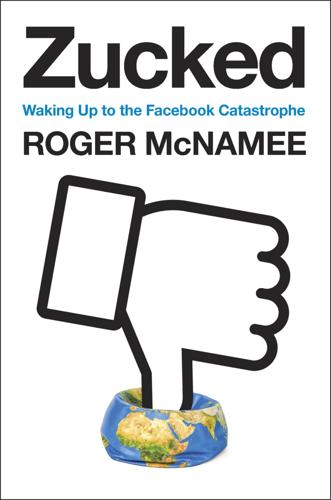
Zucked: Waking Up to the Facebook Catastrophe
by
Roger McNamee
Published 1 Jan 2019
My deepest appreciation to Marc Benioff for supporting the cause early on. Thank you to Tim Berners-Lee for sharing my essay from Washington Monthly. Huge thanks to Gail Barnes for being my eyes and ears on social media. Thank you to Alex Knight, Bobby Goodlatte, David Cardinal, Charles Grinstead, Jon Luini, Michael Tchao, Bill Joy, Bill Atkinson, Garrett Gruener, and Andrew Shapiro for ideas, encouragement, and thought-provoking questions. Many thanks to Satya Nadella, Peggy Johnson, and Bill Gates for taking the issues seriously. Thank you to Tim Cook and all of Apple for their commitment to protecting the privacy and freedom of customers.
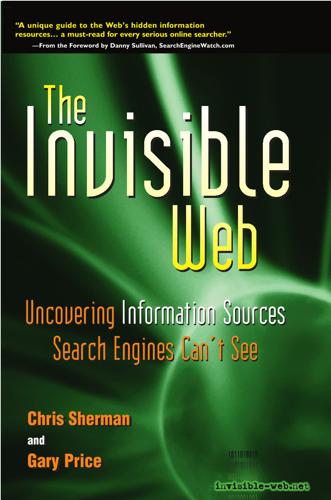
The Invisible Web: Uncovering Information Sources Search Engines Can't See
by
Gary Price
,
Chris Sherman
and
Danny Sullivan
Published 2 Jan 2003
Nelson’s project never achieved enough momentum to have a significant impact on the world. Another twenty years would pass before Xerox implemented the first mainstream hypertext program, called NoteCards, in 1985. A year later, Owl Ltd. created a program called Guide, which functioned in many respects like a contemporary Web browser, but lacked Internet connectivity. Bill Atkinson, an Apple Computer programmer best known for creating MacPaint, the first bitmap painting program, created the first truly popular hypertext program in 1987. His HyperCard program was specifically for the Macintosh, and it also lacked Net connectivity. Nonetheless, the program proved popular, and the basic functionality and concepts of hypertext were assimilated by Microsoft, appearing first in standard help systems for Windows software.

Dawn of the New Everything: Encounters With Reality and Virtual Reality
by
Jaron Lanier
Published 21 Nov 2017
That meant you weren’t dealing with languages, tools, or libraries from other programmers. Everything important was fresh, entirely made of your own mind. You were an abstract explorer, facing only wilderness. If you wanted to get a circle to appear on a computer screen, you had to figure out a way to code a circle that would be fast enough to matter. I remember going with Bill Atkinson, who coded the graphical aspects of the original Macintosh, to see the legendary guru of algorithms at Stanford, Don Knuth, to present new ways of drawing circles. It was like visiting the code pope. Push anything far enough and it transforms. This principle applies even to computers. At the core of the coding experience, when you are functioning at the very highest level of excellence, you reencounter a mysterious sense of the world that is not code-like.

Machines of Loving Grace: The Quest for Common Ground Between Humans and Robots
by
John Markoff
Published 24 Aug 2015
He said that in response to Sculley’s request, he had pulled together a variety of ideas from his original Dynabook research and the artificial intelligence community, as well as from MIT Media Laboratory director Nicholas Negroponte, an advocate of speech interfaces.5 Negroponte had created the Architecture Machine Group at MIT in 1967, in part inspired by the ideas of Ivan Sutherland, whose “Sketchpad” Ph.D. thesis was a seminal work in both computer graphics and interface design. Historians have underestimated Negroponte’s influence on Apple and the computer industry as a whole. Although Negroponte’s “Architecture Machine” idea never gained popular traction, it did have a very specific impact on Bill Atkinson, one of the principal designers of Apple’s Lisa and Macintosh computers. Many of the ideas for Lisa and Macintosh were generated from Negroponte’s early efforts to envision what the field of architecture would be like with the aid of computers. Negroponte’s group created something called “DataLand,” a prototype of a visual data management system.
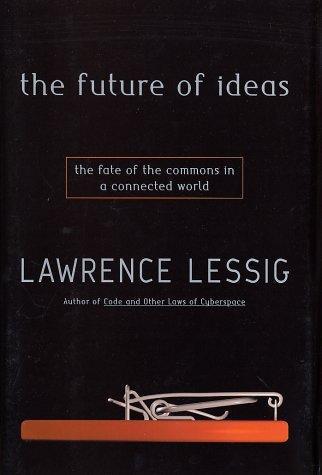
The Future of Ideas: The Fate of the Commons in a Connected World
by
Lawrence Lessig
Published 14 Jul 2001
The computers simply could not communicate with each other.49 Berners-Lee thus began to think about a system to enable linking among documents—through a process called “hypertext”—and to build this linking on top of the protocols of the Internet. His ideal was a space where any document in principle could be linked to any other and where any document published was available to anyone. The components of this vision were nothing new. Hypertext—links from one document to another—had been born with Vannevar Bush,50 and made famous by Bill Atkinson's HyperCard on the Apple Macintosh. The world where documents could all link to each other was the vision of Robert Fano in an early article in the Proceedings of the IEEE. 51 But Berners-Lee put these ideas together using the underlying protocol of the Internet. Hyperlinked documents would thus be available to anyone with access to the Internet, and any document published according to the protocols of the World Wide Web would be available to all.

Whole Earth: The Many Lives of Stewart Brand
by
John Markoff
Published 22 Mar 2022
Another important debate took place over the economic value of software. Richard Stallman, a young MIT programmer who had developed freely shareable versions of several key programming languages, stated that his goal was to make all software free. That angered other attendees such as Apple Macintosh designer Bill Atkinson, who responded, “Hackers want me to give [this] Quickdraw code away, but there is this thing called IBM and I want Apple to be around in 20 years.”[26] Others, such as former Quarterly editor Andrew Fluegelman and former Microsoft programmer Bob Wallace, who had coined the terms freeware and shareware, respectively, tried to walk a middle ground, giving away their software and asking for donations.
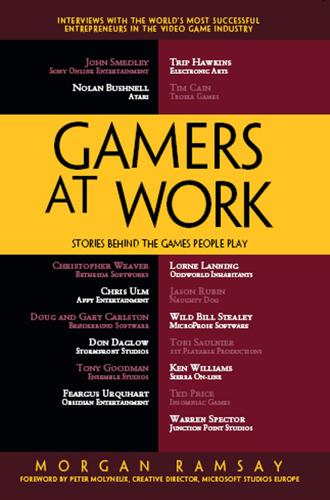
Gamers at Work: Stories Behind the Games People Play
by
Morgan Ramsay
and
Peter Molyneux
Published 28 Jul 2011
This led to an even hotter 1983 for funding companies doing personal and home computer software. After then, the market and funding climate became more difficult. Ramsay: Can you tell me about the publishing process at the time? Hawkins: I developed my idea for the “software artist” from working with brilliant developers at Apple, such as Bill Atkinson. These guys were legitimate divas. I decided to study and transfer the principles of artist management from the music industry to software. I wanted the best game ideas from the most passionate independent artists that were driven enough and good enough to get the job done. I hired a couple of my buddies from Apple, Dave Evans and Pat Marriott, to be my first producers, but I was really the first producer.

From Counterculture to Cyberculture: Stewart Brand, the Whole Earth Network, and the Rise of Digital Utopianism
by
Fred Turner
Published 31 Aug 2006
“I don’t want anyone fooling with that.”65 In discussion Bob Wallace said he had Tak i n g t h e W h o l e E a r t h D i g i t a l [ 137 ] marketed his text editor PC-WRITE as shareware (in shareware, users got the software for free but paid if they wanted documentation and support), whereas Andrew Fluegelman indicated that he had distributed his telecommunications program PC-TALK as freeware (users voluntarily paid a small fee to use the software). Others, including Macintosh designer Bill Atkinson, defended corporate prerogatives, arguing that no one should be forced to give away the code at the heart of their software. The debate took on particular intensity because, according to the hacker ethic, certain business practices—like giving away your code—allowed you to claim the identity of hacker.
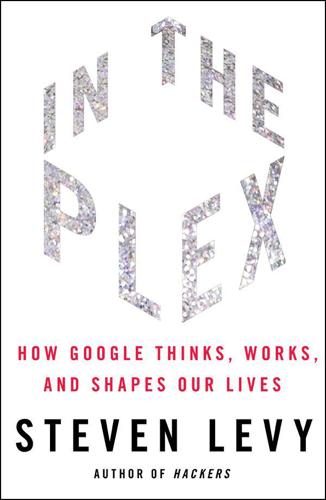
In the Plex: How Google Thinks, Works, and Shapes Our Lives
by
Steven Levy
Published 12 Apr 2011
The timeline continued to the work of Douglas Engelbart, whose team at the Stanford Research Institute devised a linked document system that lived behind a dazzling interface that introduced the metaphors of windows and files to the digital desktop. Then came a detour to the brilliant but erratic work of an autodidact named Ted Nelson, whose ambitious Xanadu Project (though never completed) was a vision of disparate information linked by “hypertext” connections. Nelson’s work inspired Bill Atkinson, a software engineer who had been part of the original Macintosh team; in 1987 he came up with a link-based system called HyperCard, which he sold to Apple for $100,000 on the condition that the company give it away to all its users. But to really fulfill Vannevar Bush’s vision, you needed a huge system where people could freely post and link their documents.

Coders at Work
by
Peter Seibel
Published 22 Jun 2009
In general when I'm reading a technical paper, it's the same challenge. I'm trying to get into the author's mind, trying to figure out what the concept is. The more you learn to read other people's stuff, the more able you are to invent your own in the future, it seems to me. We ought to publish code. The Lions Book is available. And Bill Atkinson's programs are now publicly available thanks to Apple, and it won't be too long before we'll be able to read that. That's well-documented code with lots of pioneering graphics algorithms in it. Seibel: Certainly with open source there's a lot more code out there to read than there used to be.
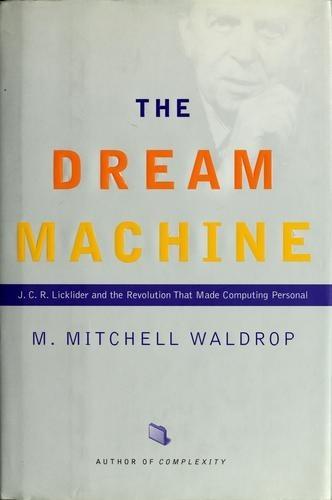
The Dream Machine: J.C.R. Licklider and the Revolution That Made Computing Personal
by
M. Mitchell Waldrop
Published 14 Apr 2001
According to legend, moreover, he immediately ordered that the Lisa be reconfigured to match the Alto display. But in reality, Hiltzik concluded in his book, the visit didn't have all that much impact on the Lisa-or not directly, anyway. Apple's partnership with Xerox fell apart soon afterward, the victim of a culture clash that was just too ex- treme. Lisa's chief programmer, Bill Atkinson, had to re-create most of what he'd seen on his own. Indirectly, though, the visit did give energy and focus to a project that badly needed both of those things. More important, it was an epiphany for Jobs and his whole team: from now on Apple would follow the gospel according to Small talk. "Lisa must be fun to use," declared a project design manifesto written a month or so after the show-and-tell.
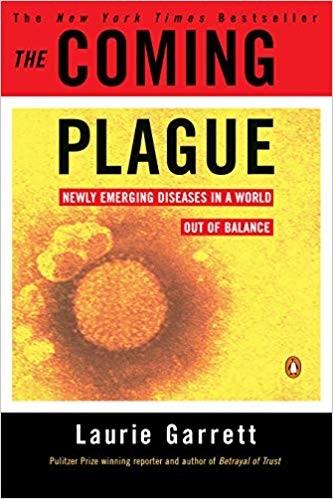
The Coming Plague: Newly Emerging Diseases in a World Out of Balance
by
Laurie Garrett
Published 31 Oct 1994
More than 27,000 U.S. children, half of them under four years of age, contracted measles during 1990; 100 died of the disease. Hardest hit was New York City, with 2,479 reported measles cases. CDC investigators were baffled by the severity of illnesses in the 1990–91 epidemic. “These kids are much sicker, and death rates are definitely higher,” the CDC’s Bill Atkinson said. “We don’t know whether it’s because the strain of measles out there is more virulent, or the kids are more susceptible.” Many of the ailing children, particularly in New York City, had never been vaccinated. They hadn’t even received their primary shots, much less boosters. “Now the majority of cases are in unvaccinated children,” Dr.